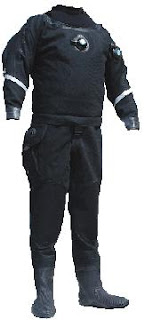Below is my review of the
Green Force AA12 trorch with Tristar Plus LED Dimmable head that I first posted on the
Dive Magazine website in a bid to win a canvas Great White Shark print taken by Maria Munn of ocean Visions.
Apologies for the length but I've chucked everything in for you.

WITH LIGHTSABER LOOKS THEY'LL BE NO DARK SIDE UNDER WATER
Strengths:As tough as Chuck Norris, ruggedly stylish as Steve McQueen, flexible as Olga Korbett and as bright as the nerdy kid at school who always put their hand up when the teacher asked a question
Weaknesses:Not cheap. Clumsy divers risk flood it when switching it off and the different brightness settings require the reflexes of…someone with very good reflexes.
Writing a review on a dive torch always seemed somewhat pointless to me. You get into the water, turn it on and point the shiny end at the thing you want to see. If the lamp is any good said thing will exude a wonderful spectrum of colour. Simple. Straightforward. Job done.
But that was before I agonised for two months over whether to part with more than £350 notes for the Belgium-made Green Force AA12 Tristar Plus and struggled to find a truly warts-and-all independent perspective.
So what do you get for your money?Green Force torches are the Land Rover of dive lights, expensive but ruggedly stylish. The company’s selling point is that the system is completely modular. You buy a battery pack and marry it up with a light head of your choice, be it halogen, LED or HID. Then simply interchange and upgrade parts as you wish, or turn it from a hand torch to a cylinder-mounted umbilical, without having to splash out on the basics again.
My mid-priced pack came with an AA12 battery, Tristar Plus dimmable LED head, mains charger, charging pin, carry cases and towel, a package vastly cheaper than the sum of its parts.The unit works by screwing the head fully into the battery (or umbilical) until the connections meet.
Three O-rings provide protection from flooding and a half twist either way is enough to switch the light on or off. But here is my first quibble. While you have no switches to worry about leaking, a lot of hard-earned cash is being entrusted to three O-rings, and a diver’s grasp of half-a-turn. I fear some could flood their unit if not careful, or narked (yes, it happens to us all) by unscrewing it too far at depth. To avoid that I switched mine on just before hitting the water and left it on.The three o-rings require regular checks and battery is a bit high-maintenance. But that should keep many divers like me happy on the wet weekday nights when we long to be in the water.
Once assembled, the black-ridged battery cylinder and the greeny-gold aluminium light head resembled an underwater lightsaber (ok, I’m a child of the 70s) and I hit the water like some diving Jedi. Rather than buy the handle, I fixed a split ring and dog-clip to a hole in the battery casing (designed for the handle fixing) and hung it from a D-ring on the shoulder of my BCD. That allowed me to hold the torch comfortably without having to extend my arm in front of me and gave me peace of mind knowing that, should I let go, it would dangle from my jacket rather than vanish to the depths.
The Tristar Plus has three bright and unbreakable LEDs which deliver 30 watts but require very little power, giving 150 minutes of burn time with the AA12 battery. I easily got two 60 minute dives out of mine with no problems. but if that’s not enough, fit the head to the Flexi IV battery and get 960 minutes burn time. Oh, the beauty of a modular system.
The colour temperature of the LEDs is closer to natural daylight than halogen bulbs and helps replace colours normally lost to the blue (not as well as the costly HID heads do but I can always upgrade later). The 20-degree beam also produces a nice cool and evenly diffused light.
Diving the James Eagan Layne on a particularly bad day, it certainly helped slice through the murk and on a night dive, it illuminated so much reef I thought the sun had come up early. I didn't miss much on that dive. The dimmable LED head has three brightness settings, a strobe and an SOS.
And here is my second quibble. To switch between them you first have to turn the light on, then turn it off after less than five seconds, and then back on again. To go from maximum brightness to SOS you have to repeat the process four times. A bit of a fiddle and a faff and, 20m down, we all know five seconds becomes 15 in no time. It is a feature I can see few divers making full use of.
So, if after reading 750 odd words on a tube with a shiny end you're still asking if you should buy one, my answer is an unequivocal ‘Yes. For the Force is strong in this one.’












